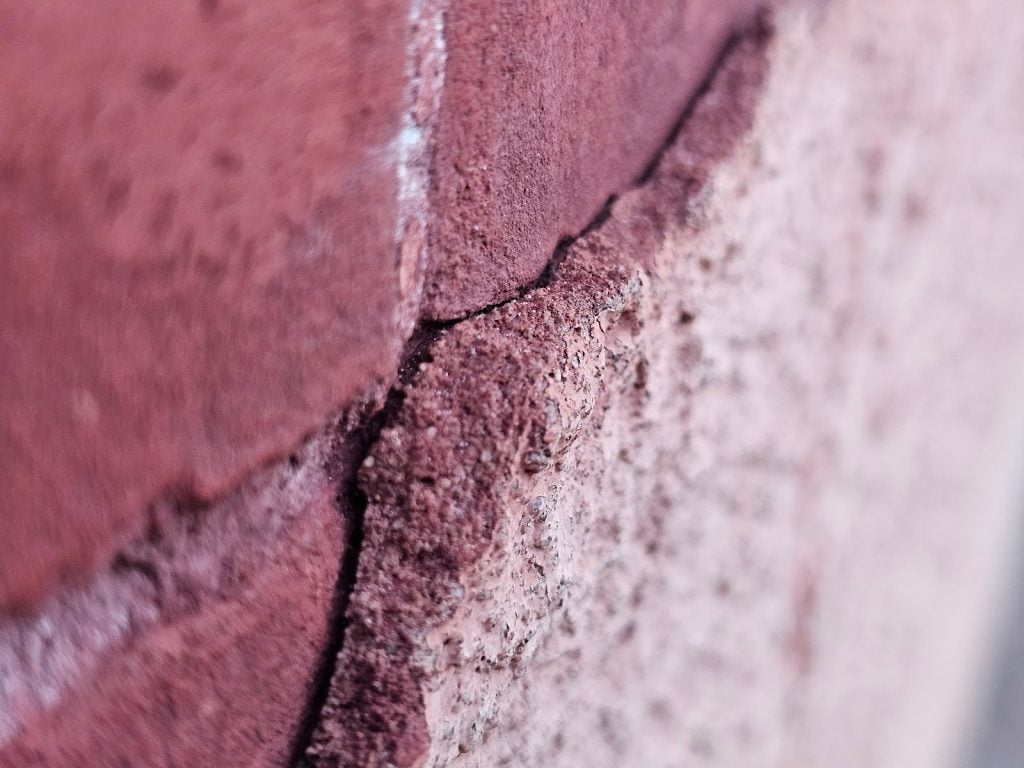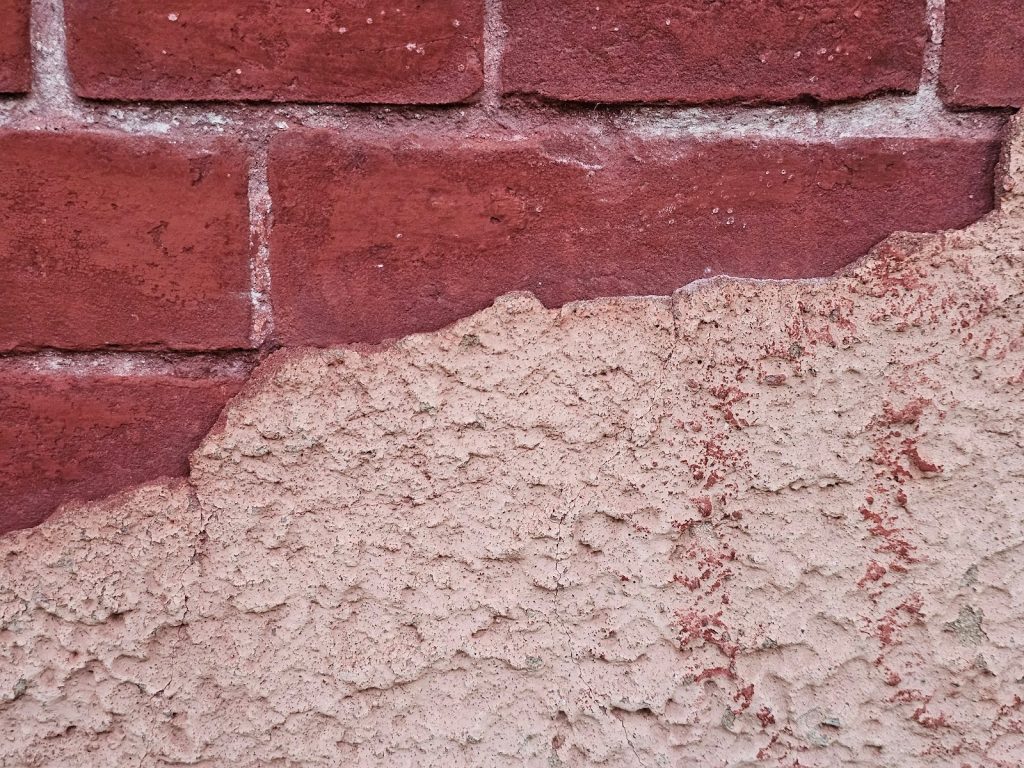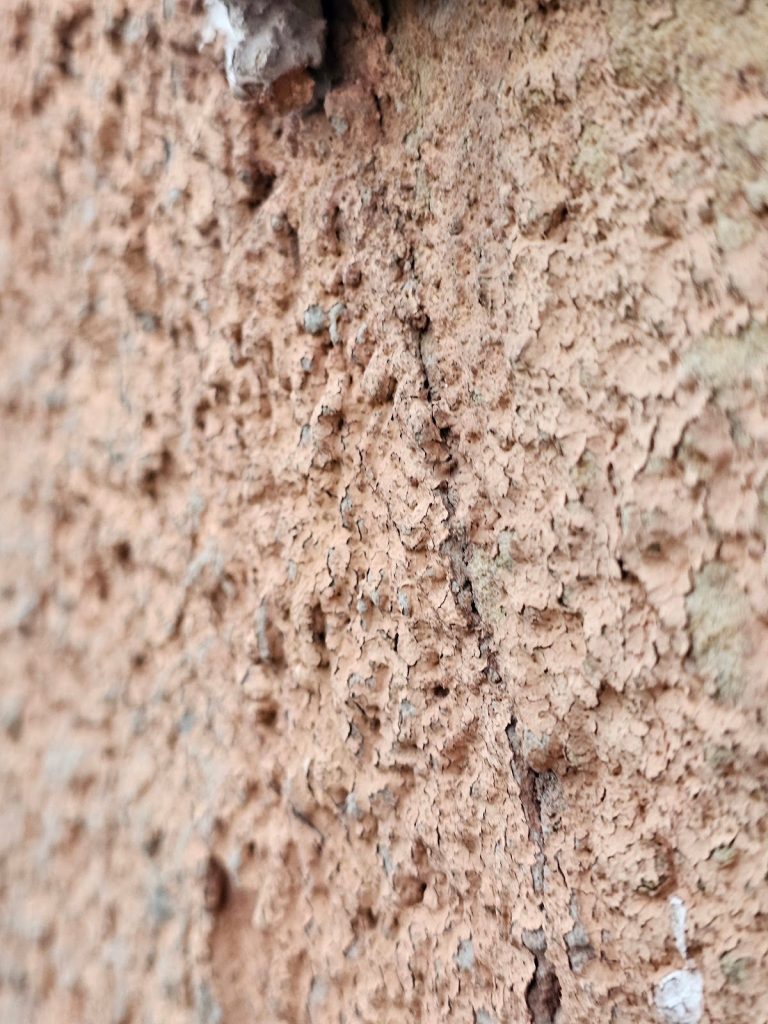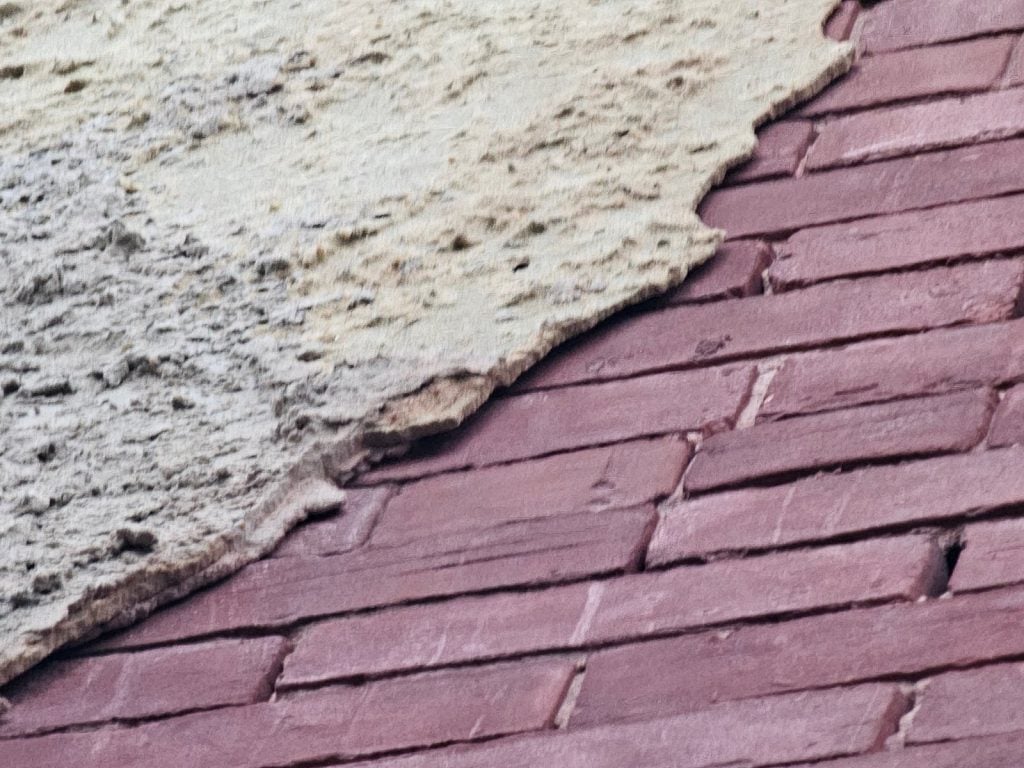Stucco Failures Threatening Historic Brick
This past week, we looked at an example of a building with severe stucco delamination. We discussed some of the potential causes of delamination and the failure. We also talked about the need for repointing of the historic brick masonry substrate. Our website happens to be full of good information for learning and understanding of some of the key principles to historic masonry restoration.
We particularly focus on historic masonry restoration and there are lots of resources of information here on our website related to the principles of historic masonry repointing. If you look closely at the mortar joints that remain beyond the area where the stucco has failed, you can see there is significant deterioration in that mortar. Even when historic masonry deterioration is not visually apparent, it can usually be tested by probing and by other means.

In the picture above, you can notice that there’s separation between the remaining stucco and the substrate brick. The stucco has literally pulled away from the surface of the brick and there’s a space between the stucco and the brick masonry. You can see a similar type of delamination happening in the picture below. Here though, in the picture below, the separation is more minimal.
It’s noticeable, but it’s not extreme to the point that there’s a large open space of separation, enough that you could slide a credit card or something thin behind or between the stucco and the brick. Because you can see this thin line though, it means that the stucco has already begun to fail and delaminate from the substrate.

When looking at the wall from a head-on type position, at 90° from the wall, it looks as if maybe the remaining portion of the stucco is still attached. Since we’ve seen it from the other angle, though, we’re aware that it’s not actually still attached the way it was intended to be or when it was originally applied. Delamination like this happens for a few different reasons.
One of the most important reasons is related to the initial installation. Substrates need to be well prepared so that you have bondability between cementitious type materials. In many cases, good preparation of a substrate just involves vigorous cleaning. In other cases, it might be important to clean the substrate through mechanical abrasion. In certain types of stucco applications a scratch coat will intentionally be applied with a roughened surface.
Essentially, at the time of applying the base coat of stucco, before it has cured, the surface will be scratched with a tool to leave lines equally spaced across the surface. This creates a key or a texture that the next successive application can adhere to with a higher amount of surface area. Plus, the roughed texture creates a three-dimensional shape which the primary or prior coat or application can bond to the successive coat.

The next picture below shows and more oblique angle view of the wall and the stucco. Here, like we showed in the other photos, you can see a hairline type shadow that indicates separation between the remaining stucco and the substrate brick surface. The brick surface was never fully cleaned or well prepared. If it had been better prepared the bond may still remain today.

The painted exposed face of a portion of the stucco remains as shown below. This stucco was intended to have a rough surface like many other types of plaster and stucco finishes that intentionally have a rough or textured three-dimensional type surface.

Even though the surface appears to be a color similar to the cementitious stucco, there’s actually a coat of paint applied to the surface of the stucco. It just happens to be a beige which is not too different than the color of the stucco itself.

We can Help
Our company focuses on historic restoration more than modern building upkeep, maintenance, and construction, but our company understands both types of construction very well and a full picture well-rounded approach is needed in any niche in the construction industry. Although we focus on historic restoration, repointing, tuckpointing and historic brick repair, our company also has technical knowledge and competencies in the areas of modern and contemporary construction as well as we become one of the leaders in that area of the market today. Understanding both historic and modern or contemporary construction is useful because both aspects help understand the challenges and potential solutions for challenges in building science and construction.
We can help with a variety of historic masonry restoration needs and upkeep, from modest tuckpointing and or repointing to complicated and extensive historic masonry restoration. Infinity Design Solutions is a historic restoration specialist contractor specializing in both historic masonry restoration such as tuckpointing our repointing, and brick repair. If you have questions about the architectural details or facade of your historic building in Washington DC, reach out and say hello and if we can help we’ll be glad to assist you. You can email us or call us on the telephone at the following link: contact us here.
